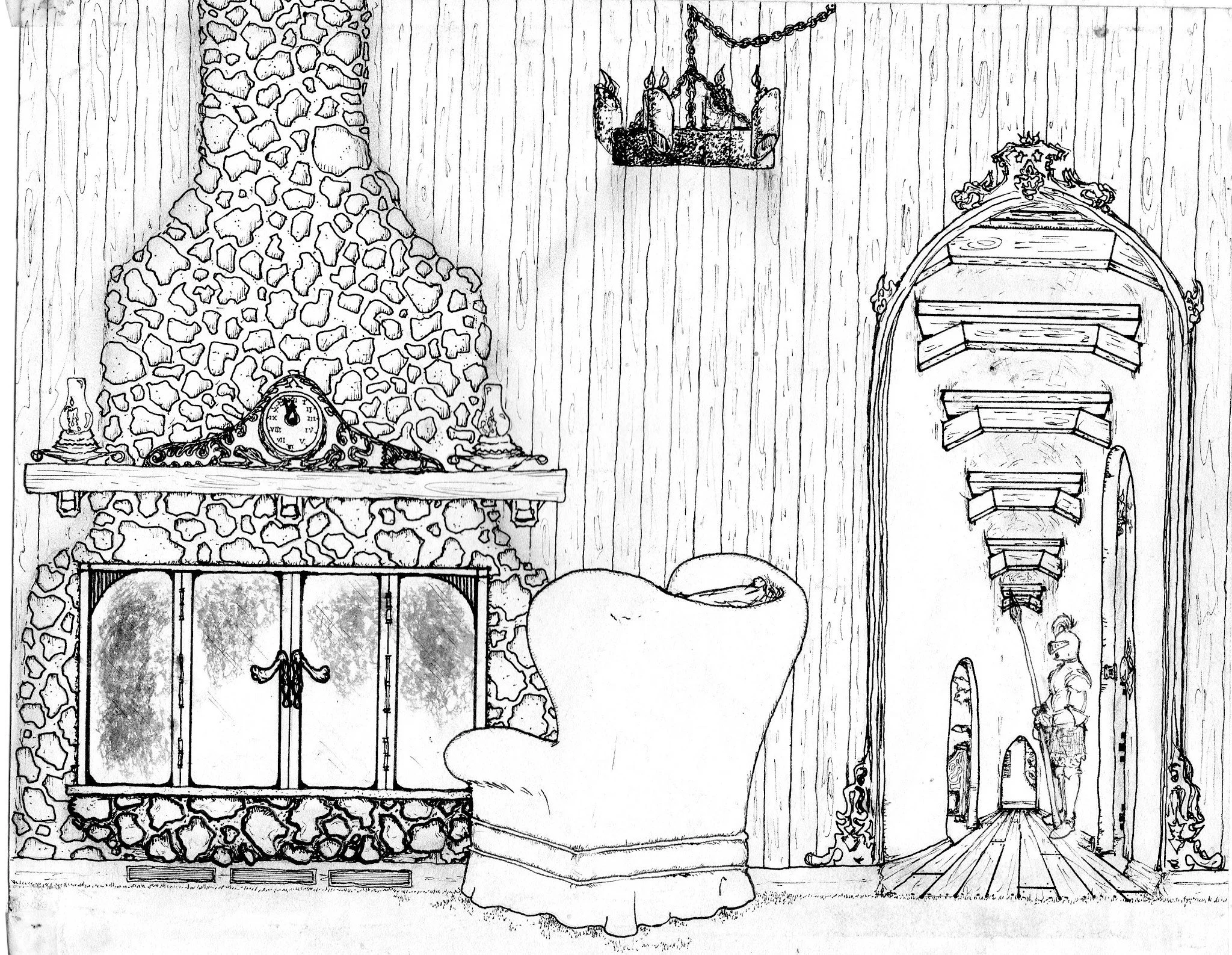A Sketch Book artist
This drawing began with one tree. As I added each element it began to take the shape of the path I was actually designing in a landscape project. Yet I had only gotten as far as a two dimensional representation of that design. When we start somewhere on the path we must trust the process, and know that we will eventually arrive at our destination.
How soon we arrive is simply a factor of how intentional we are about the journey getting there.
The journey to the end of an idea for someone who doesn’t consider themselves an artist but knows how to draw is a unique and deeply personal experience. This individual doesn’t set out to create a masterpiece; instead, they use drawing as a tool—a means of thinking out loud, a visual journal that helps bring clarity to their thoughts and feelings.
At the start, the idea may be nebulous, difficult to grasp fully. It’s a quiet stirring inside, a question or problem without a clear answer. For someone who draws as a form of journaling, reaching for the pencil or pen becomes a natural response. They’re not seeking perfect lines or polished shading; the focus is on expressing the essence of the thought, the emotional undercurrent, or the fragments of understanding that flicker through the mind.
Imagine walking through your sketches….where would that journey take you?!
Sketching becomes an act of exploration, a way to externalize the internal. Rough shapes, incomplete figures, abstract symbols—they all serve as stepping stones toward grasping the concept more fully. Sometimes the lines will be hesitant, reflective of uncertainty; other times, bold and confident, marking moments of revelation. Each stroke reveals a little more, like mapping out an unfamiliar terrain. This visual process helps untangle complicated ideas by making them tangible, allowing the thinker to see relationships, patterns, or contradictions that words alone couldn’t unveil.
As the journey unfolds, drawing encourages a rhythm of pause and reflection. When the pen rests, the mind catches up. When the hand moves, the thought clarifies. There’s a dialogue between mind and hand, an iterative loop where each sketch prompts new questions and insights. Mistakes are not roadblocks but guide posts—erasures, smudges, or stray marks tell a story of trial and error, of persistence in pursuit of understanding.
“Sometimes all you’ve got at your disposal is a borrowed pen, and the table mat at a diner…use it!”
For the non-artist, this practice also softens the fear of imperfection. Because the purpose isn’t aesthetic success but comprehension, the pressure to “get it right” diminishes. This freedom invites experimentation—wild ideas, silly doodles, or fragmented imagery—that, paradoxically, often lead closer to the heart of the idea. The journey is not linear; it loops back on itself, shifts direction, or lands on surprising connections. The pages of the sketchbook become a visual diary of these twists and turns—sometimes chaotic, sometimes serene, but always honest.
Reaching the end of the idea doesn’t mean arriving at a finished product in the traditional sense. Rather, it signifies a moment of clarity or resolution. The sketches may crystallize into a concept that feels whole, a solution that resonates on a deep level, or simply a fuller understanding of the challenge at hand. In some cases, the process might reveal that the original idea needs to evolve or branch into something new altogether.
Through this journey, the act of drawing itself transforms from a secondary skill into a powerful tool for thinking and self-expression. It demystifies creativity, making it accessible and practical. The non-artist who draws is not just capturing images—they are constructing meaning, building bridges from uncertainty to insight.
Ultimately, the journey to the end of an idea, when traveled through sketch journaling, becomes a journey inward. It is a way to slow down a busy mind, to listen more closely to one’s own thoughts, and to engage with challenges in a tactile and visual language. For those who don’t identify as artists, this approach offers a unique adventure—a way for imagination to light the path to understanding, turning the abstract into something lived and known. In the gentle rhythm of lines and shapes, the story of the idea unfolds until it finally feels ready to be shared, acted upon, or simply held as a well-earned moment of insight.




